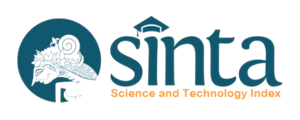THE ROLE OF INDIGENOUS ECONAMING SYSTEMS IN ECOLOGICAL CONSERVATION: A CASE OF LUBUKUSU AND LUKABARASI LANGUAGES IN WESTERN KENYA
(1) Kibabii University
(2) Masinde Muliro University
(*) Corresponding Author
Abstract
Keywords
Full Text:
PDFReferences
Agrawal, A. & Gibson, C. C. (1999). Enchantment and disenchantment: The role of community in natural resource conservation. World Development, 27(4), 629-649.
Alexander, R. & Stibbe, A. (2014). From the analysis of ecological discourse to the ecological analysis of discourse. Language Sciences, 41, 104-110.
Berkes, F. (2003). Rethinking community-based conservation. Conservation Biolgy, 18(3), 621-630.
Campbell, K. & Hofer, H. (1995). People and wildlife: Spatial dynamics and zones of interaction. In A. R. E. Sinclair & P. Arcese (Eds.), Serengeti II: Dynamics, management, and conservation of an ecosystem, 534-570. Chicago: The University of Chicago Press.
Colding, J. & Folke, C. (2001). Social taboos: “Invisible” systems of local resource management and biological conservation. Ecological Applications, 11(2), 584-600.
Crystal, D. (1997). English as a global language. Cambridge: Cambridge University Press.
Emerton, L. (2001). The nature of benefits and the benefits of nature: Why wildlife conservation has not economically benefited communities in Africa. In H. David & M. Murphree (Eds.), African wildlife and livelihoods: The promise and performance of community conservation. Portsmouth, NH: Heinemann.
Foucault, M. (1995). Discipline & punish: The birth of the person. New York and Toronto: Vintage Books.
Fill, A. & Muhlhausler, P. (Eds.). (2001). The Ecolinguistics reader: Language, ecology, and environment. London and New York: Continuum.
Giddens, A. (1991). The consequences of modernity. Cambridge: Polity Press.
Haidir, H. & Sinar, T. S. (2019). Arkais vocabulary identification as efforts to revitalize the language with a Panai: Ecolinguistic perspective. International Journal of Linguistics, Literature and Translation (IJLLT), 2(6), 23-30.
Haugen, E. (1972). The ecology of language. In F. Alwin & M. Peter (Eds), 2001, The Ecolinguistics reader: Language, ecology, and environment. London and New York: Continuum.
Filani, I. & Melefa, O. M. (2014). A socio-semiotic study of nicknaming among undergraduates in a Nigerian University. Linguistik Online, 68(6). Retrieved on July 9, 2018, from http://dx.doi.org/10.13092/lo.68.1632
Hunston, S. & Thompson, G. (Eds.). (2000). Evaluation in text: Authorial stance and the construction of discourse. Oxford: Oxford University Press.
Leader-Williams, N, Albon, S. D., & Berry, P. S. M. (1990). Illegal exploitation of black rhinoceros and elephant populations: Patterns of decline, law enforcement and patrol efforts in Luangwa valley, Zambia. Journal of Applied Ecology, 27(3), 1055-1087.
Lindo, A. V. & Jeppe, B. (Eds.). (2000). Dialectal Ecolinguistics Three Essays. Symposium 30 Years of Language and Ecology, Graz 2000. Austria: University of Odense Research Group for Ecology, Language and Ecology.
Mbete, A. M., Putra, A. A. P., Yadnya, I. B. P., Simpen, I. W., Genua, V., & Utami, G. W. N. (2015). Khazanah ekoleksikal guyub tutur bahasa Lio, Flores. Laporan Penelitian. Universitas Udayana.
Mühlhäusler, P. (2003). Language of environment, environment of language: A course in Ecolinguistics. London: Battlebridge Publications.
Murphree, M. W. (1993). Decentralising the proprietorship of wildlife resources in Zimbabwe's communal lands. In L. M. Dale & C. Nick (Eds), Voices from Africa: Local perspectives on conservation. Washington, D.C.: WWF-US
Odum, E. P. (1994). Dasar-dasar Ekologi. Edisi ketiga. Terjemahan Tjahjono Samingan. Yogyakarta: Gadjah Mada University Press.
Stibbe, A. (2003). As charming as a pig: The discursive construction of the relationship between pigs and humans. Society & Animals, 11(4), 375-392.
Stibbe, A. (2015). Ecolinguistics: Language, ecology and the story we live by. London and New York: Routledge.
DOI: https://doi.org/10.24071/llt.v24i1.2842
Refbacks
- There are currently no refbacks.
Copyright (c) 2021 Benard Angatia Mudogo

This work is licensed under a Creative Commons Attribution-ShareAlike 4.0 International License.
LLT Journal: A Journal on Language and Language Teaching Sinta 1 Certificate
.jpg)

This work is licensed under CC BY-SA.
Creative Commons Attribution-ShareAlike 4.0 International License


.png)

















